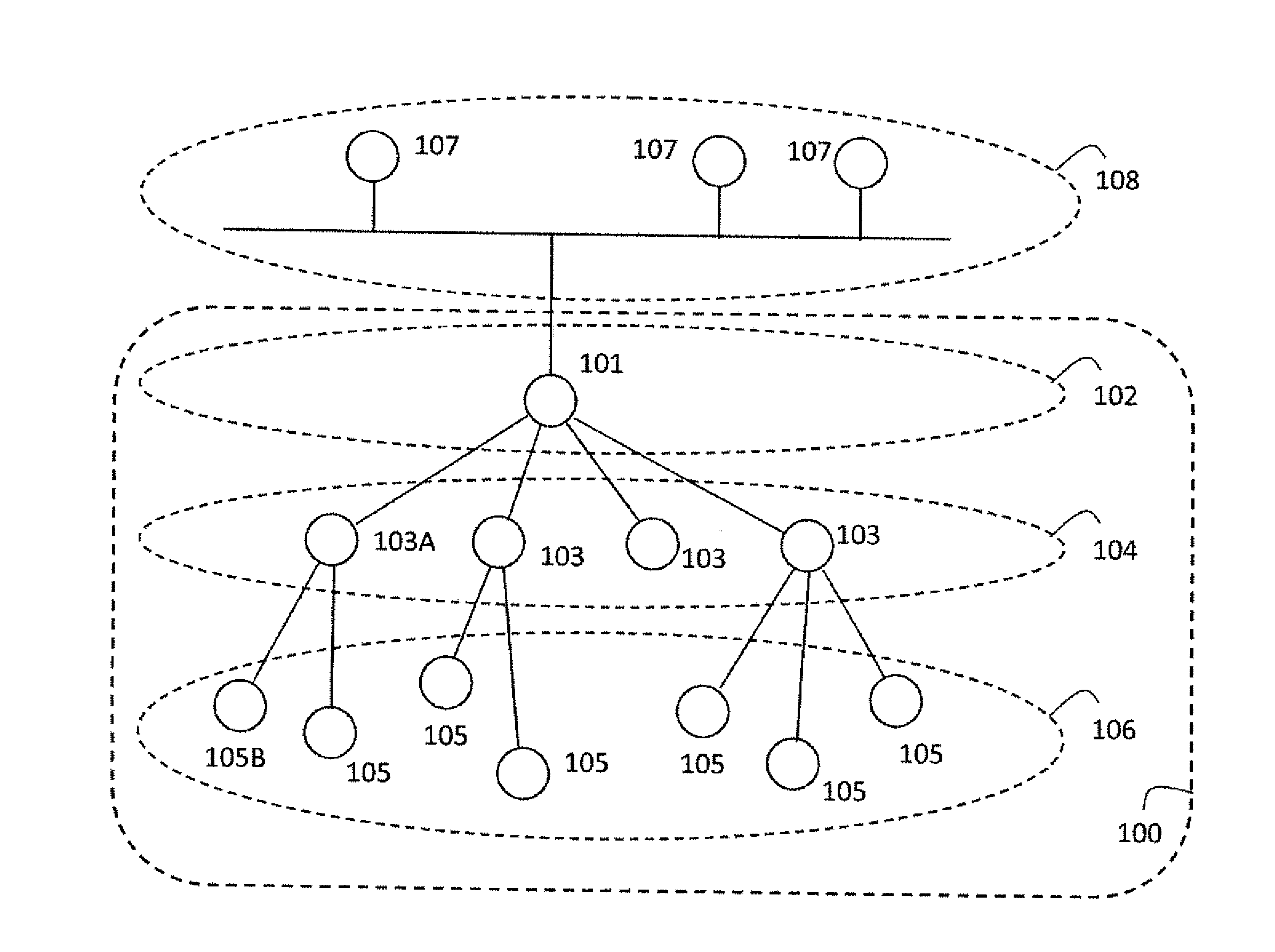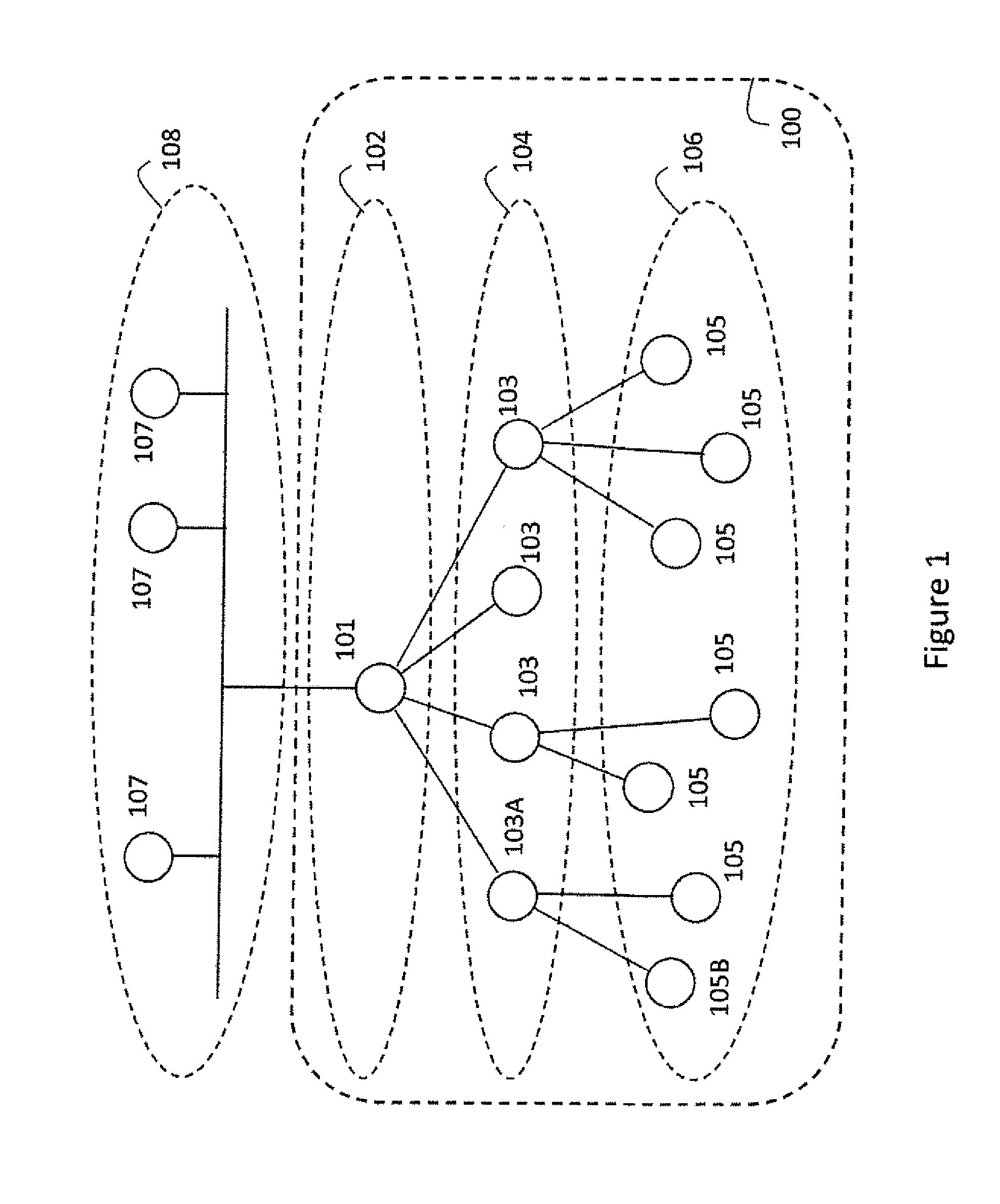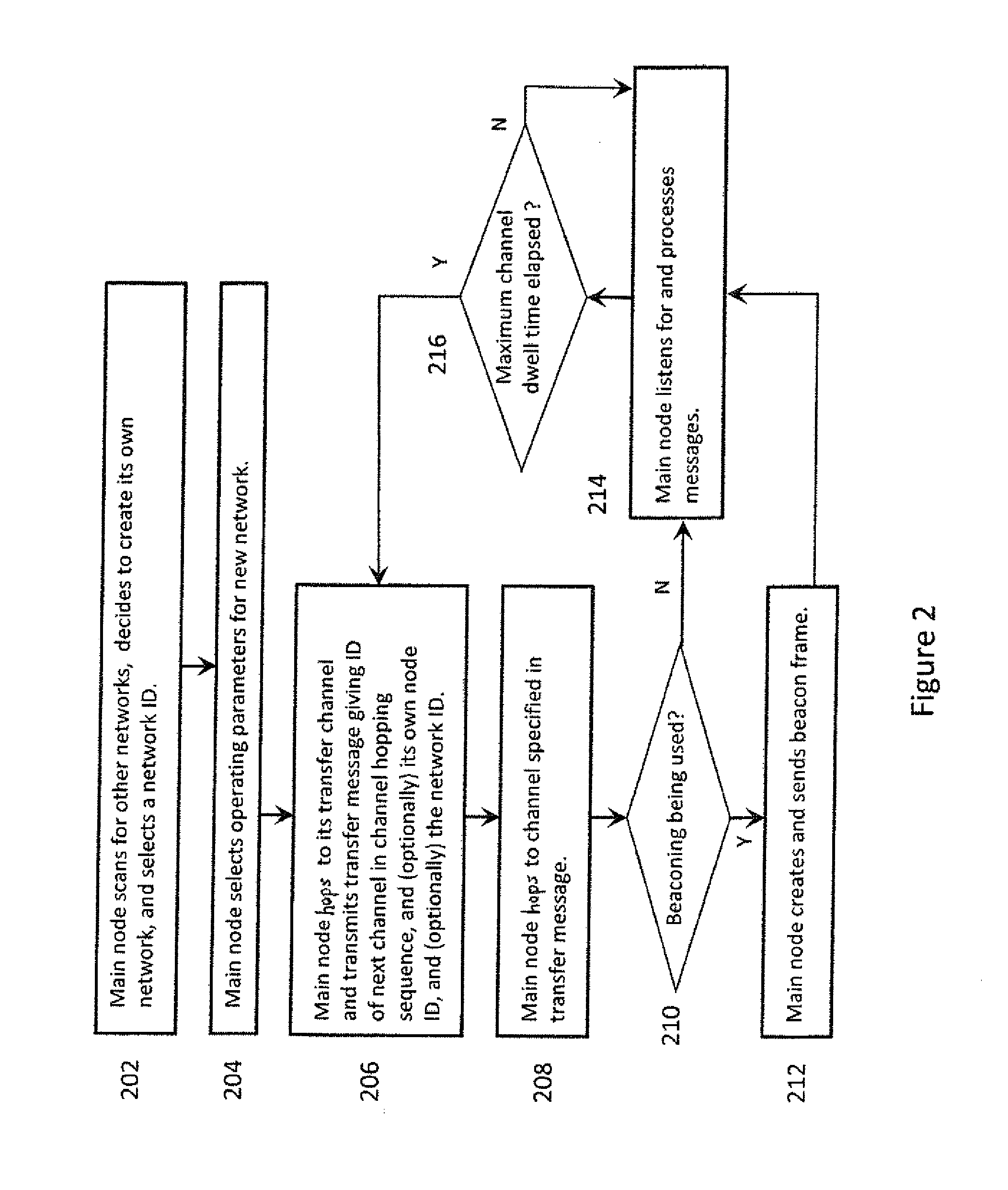Oftentimes the fully-functional nodes, which serve, or are capable of serving as parent nodes, use higher
receiver sensitivities and
transmitter powers and better
channel isolation (i.e., better radios), while end-nodes (which virtually always fill the role of children nodes and are much more numerous in the network) use less costly radios with generally poorer performance.
However, conventional communications protocols utilized with multi-tier wireless sensor networks experience certain limitations.
For example, a common problem often encountered in physically large wireless sensor networks is that there may be two nodes inside the same network and located at two extreme edges of the
physical space of that network, which need to send a message at the same moment.
The two messages corrupt one another and thus the nodes in the middle are not able to understand either message.
Hence, conventional network protocols are unable to prevent message overlap when not all of the nodes in the network can hear all messages from all other nodes.
This is particularly a problem with two end nodes (as opposed to an end node and a gateway or
repeater nodes, or two
repeater nodes, etc) since end nodes tend to have minimal hardware (e.g. radio
transceiver of limited receive sensitivity, and no low-
noise amplifier (LNA) for example).
Another general problem in conventional wireless networks relates to the fact that most end-nodes are battery powered, and operate with a low
duty cycle, namely the end nodes are in
sleep mode a vast majority of the time in order to conserve power.
This leads to a second problem, namely upper-tier management nodes (
repeater and gateway nodes) are unable to send
network management messages to end-nodes when the end-nodes are in
sleep mode a vast majority of the time, such as which channel is currently active.
Because an end-node is asleep most of the time, deaf to any management messages from its parent node in the network, and because the end-node wakes up at random times dependent upon events outside of the control of the network, the end node cannot easily track which channel the network is using at any one point in time.
The full multi-channel scan is extremely expensive from a power perspective.
Hence, a problem exists that end-nodes, after awakening from long periods of sleep, are unable to quickly find the active channel in the network over which the end-nodes are allowed to communicate and waste power finding the active channel.
That is, there are cases where end-nodes spend more time and power searching for the active channel in frequency hopping networks than they spend in actually sending and receiving application oriented data.
The above problems are exacerbated by the sheer number of end-nodes in a very large network, leading to another problem.
Conventional network protocols are not well suited to support a very large number of nodes in an extensible way, such as in a way that can theoretically support a nearly unlimited number of end-nodes.
The former can be used by any node provided that node first employs the anti-collision mechanism—CSMA-CA, CSMA-CA and time slotting methods help manage the competition among nodes for a limited bandwidth, but do not scale well when the size of a network substantially increases (e.g., above a few hundred messages per minute).
For example, as nodes are added, the number of slots available is quickly exhausted.
Also, great pressure is placed on the main node in a large network, and repeater nodes have a relatively limited role of merely repeating the messages between an end-node and the main node.
Hence, the resulting network does not scale well.
 Login to View More
Login to View More  Login to View More
Login to View More 


